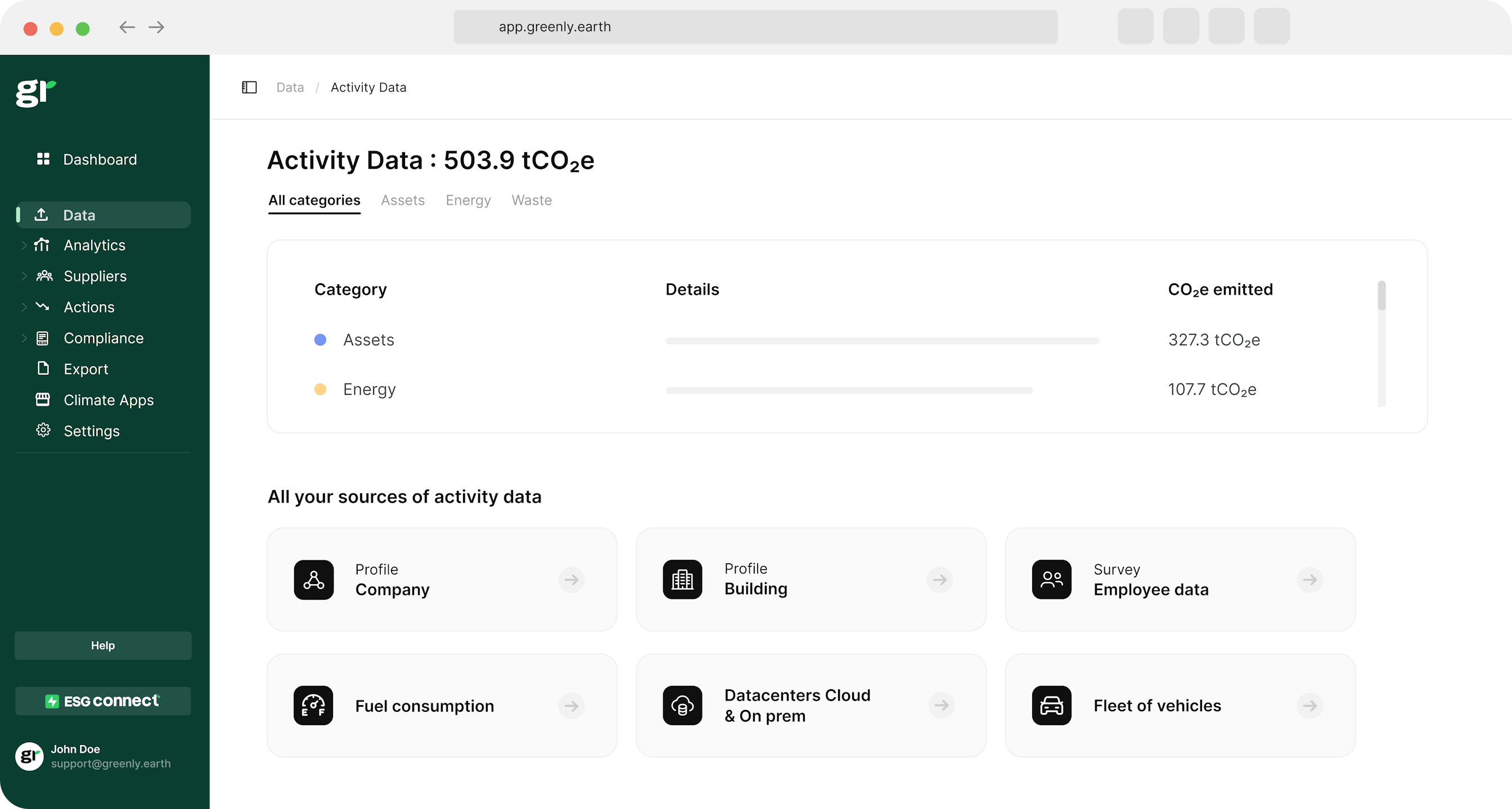ESG / CSR
Industries
Going Paperless: All You Need to Know



These days, when we pull up to an art exhibit or a concert – many of us have opted for the electronic tickets to be delivered to our phones, eschewing the need for paper tickets to be printed out.
Many people have chosen to go paperless, and although only one in eight companies consider themselves as paperless – this figure is bound to increase in the coming years as the push for sustainability and reducing our corporate carbon footprint continues.
In this article, we’ll explain what it means to go paperless, the pros and cons, and if going paperless is really better for the environment.
What does it mean to go paperless?
Going paperless refers to significantly reducing or cutting out the use of paper entirely – such as by downloading tickets for concerts, trains, and flights on your smartphone as opposed to printing them out and presenting them by hand.
💡 In the midst of evolving technology and climate change, going paperless is often a sign of commitment to the environment or a genuine effort to transition to the use of new technology.
As a result of going paperless, companies will need to scan existing physical documents, transition to the use of digital signatures, and utilize data storage.
Here are a few of the reasons why companies may decide to go paperless:
- Adhere to clients wishes of a streamlined & digital process
- Avoid the need for an in-office printer
- Allowing for easier exchange of information between clients and other businesses
- Creating smoother internal processes and communication
👉 As your business expands, it is likely the amount of tax documents, employee and client files, and more papers will grow – making going paperless a viable option to help limit clutter and waste in your organization.

What are the pros and cons of going paperless?
There are several pros and cons to going paperless, such as helping to reduce global waste and allowing for easier access of files – but storing information on a computer or server can increase the risk of a data hack.
💡 Going paperless can prove expensive and time consuming in the beginning, but it can provide indispensable benefits to your business in the long run – especially as people grow more concerned about a company’s sustainability.
Read more below on the pros and cons of going paperless to better decide how your company should handle its data organization and account creation moving forward.
Pros of going paperless
Here are some of the pros of paperless:
- Reduce Environmental Impact – Going paperless can help to prevent deforestation, preserve energy and water, and also avoid excess waste from accumulating in our landfills.
- Easier to Organize – As opposed to traditional filing systems, going paperless can make it easier to collect paramount documents – such as for complying with environmental regulations or preparing for tax season.
- Immediate Access & Accessibility – Digital accounts and files can be accessed from anywhere in the world with internet access, making going paperless exceptionally useful for digital nomads and international businesses.
- Long-Term Cost Savings – While it may be more expensive in the beginning to employ a paperless business model, it can help to reduce operational costs long-term. This is because businesses will save money on paper, ink, and physical storage space in the office.
- Need for Less Employees – Companies that have continued to use paper will often need secretaries to type up reports or organize file cabinets by hand, but going paperless can eradicate the need for these more “busy work” employees.
- Intertwined with Smartphones – Users are more or less addicted to their smartphones today, but when it comes to going paperless – it may not be such a bad thing.
- Improved Business Efficiency – Going paperless can make it easier to relieve data, which ultimately reduces the amount of time spent looking for information – and that time can then be used in other areas to benefit the business.
- Greater Security – Traditional paper files can easily be broken into and stolen, whereas digital documents often have improved security measures, passwords, and even face identification necessary to access the information – making it harder for there to be a data breach.
Cons of Going Paperless
It is important to remember that while going paperless can allow a business to improve its overall efficiency and reduce waste, there are also potential consequences to transitioning to the use of electronic documents.
Here are some of the cons of going paperless:
- Need for Data Storage in Budget – Going paperless will require a significant amount of increased data storage, which will need to be factored into your company’s annual budget.
- Increased Risk of Data Breach – Although digital files are generally safer than paper files, as there will always be an accessible backup in the event of a natural disaster like a wildfire – the possibility of a data breach will always exist, as your files will now be accessible on the cloud.
- Lack of Compliance & Employee Willingness – It’s possible that some regulatory requirements may still require physical copies or signatures, which could make going entirely paperless challenging for some industries. In addition to this, not all of your employees may feel comfortable with going paperless.
- Reliance on Technology – If there is a power outage for the day or a data hack, your business may lose its ability to operate in the short-term. Also, remember that hackers may threaten to release your data if your do not pay their bribe – which could result in a loss of customer trust.
- Digital Carbon Footprint – While going paperless reduces the waste created by the production, usage, and disposal of paper – it’s important to remember that data storage centers create a reasonable carbon footprint, too.
👉 Remember, popular examples of going paperless include using online bank statements, sending digital invoices, providing patients with electronic medical records, and having your employees use DocuSign to renew their contracts.
The table below will depict these examples of going paperless and their pros and cons:
| Example of Going Paperless | Pros | Cons |
|---|---|---|
| Email Invoicing | Reduces paper waste, faster delivery, lower postage costs | Security concerns, requires digital access and literacy |
| Digital Document Storage (Cloud) | Minimizes physical storage, easy access and sharing | Dependent on internet, potential data privacy risks |
| Electronic Signatures | Eliminates paperwork, faster, secure storage | May lack legal acceptance in some areas, software costs |
| Online Billing & Payments | Environmentally friendly, time-saving, reduces paper | Security risks, difficult for non-tech-savvy users |
| Mobile Apps for Note-Taking | Reduces use of notebooks, easy organization and search | Screen dependency, app subscriptions, limited battery life |
| Digital Marketing (Emails, Social Media) | Less paper usage, targeted audience reach, cost-effective | Online ad fatigue, limited reach for non-digital users |

Why are some people and companies hesitant to go paperless?
Several individuals and industries may find it too daunting to give up paper entirely, as it disrupts their current way of life.
💡 A good example of a group of people hesitant to go paperless include mariners, who continue to rely on paper graphs and charts to decipher changes in coastlines or even to identify shipwrecks.
Several professions, such as mariners, have been using paper to successfully execute their projects for centuries – and view going paperless as an inconsiderate use of time and training that would ultimately have no impact on their productivity.
Let’s think of another popular example of potentially going paperless in the future: money. It’s completely feasible to presume that one day, currency will no longer be printed, cash will no longer be accepted, and all financial transactions will be made electronically.
This potential transition to going paperless with money is likely to be met with a lot of resistance, as older generations will view going paperless in terms of currency as a loss – viewing it as a struggle to support small businesses who may not have the capital to operate successfully with 100% digital currency.
👉Therefore, many companies could benefit from a hybrid approach to discover whether going paperless or not would be helpful or detrimental to their business – as going paperless cold turkey could prove catastrophic for internal operations, especially for smaller businesses or specific professions.

Is going paperless really better for the environment?
Going paperless is generally better for the environment as the digital industry continues to adapt to e-waste and reduce energy usage, whilst paper production is not making the same progressive effort.
💡 This is due to the fact that more of society has adapted to going paperless and using technology in our day to day lives.
Here are some reasons why going paperless is better for the environment:
- Reduces Deforestation – The less trees that are needed to produce paper, the less chances there are at disrupting forests and their biodiversity.
- Less Chance of Waste – If more companies and people were to go paperless, it would reduce the chances of accidentally filling up our landfills with paper – as roughly 68% of paper was recycled in the U.S. in 2022, meaning a third of paper ends up in landfills.
- Cut Back on Water Usage – A single piece of A4 paper can require up to 20 liters of water to be produced, meaning that going paperless can help reduce water consumption.
- More Office Space – Instead of trying to upgrade your office space to accommodate employees, going paperless can help to create more room in office environments. Renting a smaller office space can reduce energy consumption and cut back on utility bills.
Here are some reasons to reconsider going paperless to protect the environment:
- Paper is Recycled More Often than E-Waste – 46 million tonnes of paper was recycled in the United States in 2018 alone, and in comparison to how only 17.4% of e-waste was recycled globally – some companies may be concerned with the environmental footprint of going paperless.
- Paper Comes From Renewable Resources – The production of paper relies heavily on renewable resources, whereas going paperless requires significant energy consumption and a newfound reliance on data storage.
👉 In the end, the decision to go paperless will be contingent on the size, location, and specific needs of your business – as going paperless may not be the right decision for smaller, local businesses or companies that have yet to expand to global markets.

Should your company go paperless?
Ultimately, if your company has the financial resources to go paperless – it may be worthwhile for your business in the long-term as it can help to improve data and file management and prepare for environmental regulations and initiatives such as the CSRD and applying to the SBTi with ease.
Going paperless can be the right decision for your company in the long-run, but it is also important to consider that smaller businesses, such as local coffee shops or thrift stores, may not be ready or able to take that next step – and that going paperless could make running or expanding your business more challenging.
💡 If going paperless seems too daunting, your business can employ a mix of using traditional paper files while also migrating some of your data to the cloud – which can help your business decide which method is more effective.
At Greenly, we value digital operations as an effort to reduce our carbon footprint and also make it easier for your company to not only upload its information to our user-friendly platform – but to allow your suppliers and other business partners to share their data easier, too.
What About Greenly?
If reading this article on going paperless has made you interested in reducing your carbon emissions to further fight against climate change – Greenly can help you!
Aligning your business to comply with sustainability initiatives such as going paperless can be challenging, but don’t worry – Greenly is here to help. Click here to schedule a demo to see how Greenly can help you find ways to improve energy efficiency and decrease the dependency on fossil fuels in your own company.
Greenly can help you make an environmental change for the better, starting with a carbon footprint assessment to know how much carbon emissions your company produces.
Click here to learn more about Greenly and how we can help you reduce your carbon footprint.




